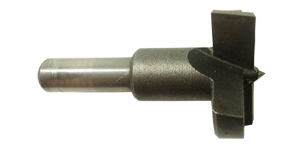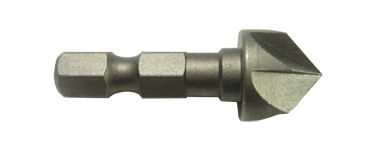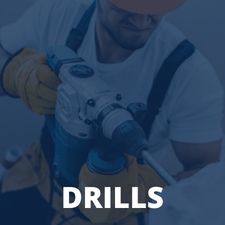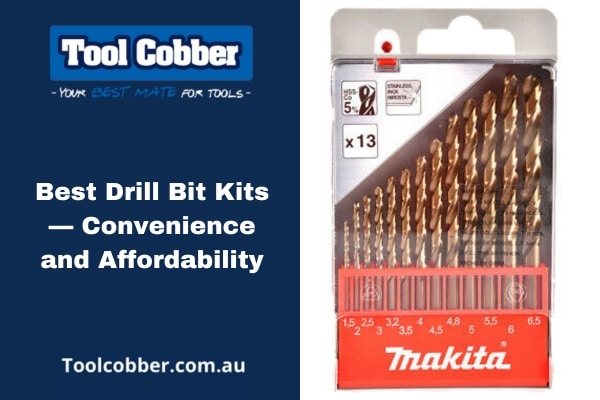
The Best Drill Bit Kits Australia Has to Offer — Top Picks and Buyers Guide
Unable to find the correct bits for your drilling jobs? Drill bit kits are your saviour! These handy, convenient, and cost-effective sets offer a variety of sizes and formats specifically designed to tackle all sorts of materials. From hanging shelves to crafting intricate cabinets — the perfect drill bit sets can handle any DIY project or trade job. Whether you’re a seasoned tradie, novice borer, or serious home improver — my guide will give you the knowledge to choose the perfect drill bit combo kit!
Best Drill Bit Kits Product Comparison Table
| IMAGE | PRODUCT | DETAILS | ||
|---|---|---|---|---|
|
Best for Impact Drills 
|
Best for Impact Drills
|
Milwaukee 48894862
|
Features
|
Check Price at Tools Milwaukee 48894862 Review Milwaukee 48894862 Review |
|
Best Drill Bit Set for Metal 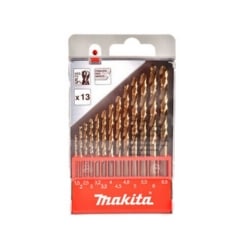
|
Best Drill Bit Set for Metal
|
Makita HSS-Cobalt
|
Features
|
Check Price at Tools Makita HSS-Cobalt Review Makita HSS-Cobalt Review |
|
Best for Stainless Steel 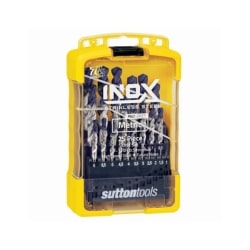
|
Best for Stainless Steel
|
Sutton D180SM3 Drill Bit Set
|
Features
|
Check Price at Toolmart Sutton D180SM3 Drill Bit Set Review Sutton D180SM3 Drill Bit Set Review |
|
Best for Ferrous Metals 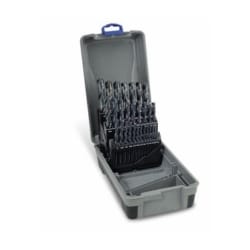
|
Best for Ferrous Metals
|
Bordo 2000-F3
|
Features
|
Check Price at Toolmart Bordo 2000-F3 Review Bordo 2000-F3 Review |
|
Best for Ferrous Metals 
|
Best for Ferrous Metals
|
Milwaukee Shockwave 4932471112
|
Features
|
Check Price at Tools Milwaukee Shockwave Review Milwaukee Shockwave Review |
Best Drill Bit Kits in Australia Buying Guide
Are you fed up with never having the correct drill bits for your jobs, or frustrated that they shear or break mid-project? Then prevent your headaches with one of the most reputable and robust drill bit kits!
These affordable and versatile sets give you a wide choice of bits to use and ensure material and drill-type stability — delivering effortless boring and keeping fatigue to a minimum.
Whether you’re tackling wood, PVC, metal, or drywall, these kits save you from hunting in the dark recesses of your toolbox for the correct accessory — saving you valuable downtime.
When choosing your ideal drill bit set, consider the following:
- Material suitability.
- Number of pieces.
- Shaft material.
- Pilot point or split point bits.
Types of Drill Bit
When purchasing a set of drill bits, it’s crucial to understand the types of bits that the kit includes — to ensure they’re suitable for your DIY or trade jobs.
If you’ve ever browsed the aisles of your local hardware or home improvement store, the choice can be overwhelming and confusing. With a multitude of styles, materials, and sizes — it can be tough to know which set to choose, even for the experienced pro.
So, to make your selection easier, here’s my breakdown of the most common types of drill bit:
Brad Point (Wood) Bits
These bits for drills feature a brad point tip — resembling a W-shape — which guides the outer edges to precisely define the hole diameter before the centre point penetrates the material.
They’re, therefore, perfect for drilling into wood and some plastics, and for jobs like dowelling. These drill bits will also sometimes come packaged with small rubber rings — called stops — that fit around the bit and allow you to choose the depth you want to drill to.
- The ultimate wood bit.
- Used for furniture restoration, cabinet building, and woodworking.
- Ensures smooth exit holes.
- Compatible with electric, cordless, and drill-driver machines.
Masonry Drill Bits
These bits, commonly tipped with tungsten carbide, are designed mainly for hammer drills — allowing them to tackle tough materials like brickwork, cement, and stonework. Some professional-quality masonry drill bits also feature a hexagonal shank instead of a cylindrical shank to prevent the bits from slipping in the chuck.
Masonry bits heat up rapidly during use, which can melt the tungsten brazing on the drill bit’s tip, allowing the tip to move and chip when drilling. To keep the bit’s temperature down, you should withdraw the bit regularly to clean its flutes and use the correct drilling RPM.
- Robust drill bits.
- Used for driving brick, masonry, and concrete.
- Typically used with rotary and hammer drills.
Multi-Purpose Drill Bits
These high-performance bits boast specially designed tungsten carbide tips with a diamond-ground edge. This combination allows them to function effectively in both hammer and rotary drilling modes. They can drill nearly every type of material — including wood, masonry, ceramic tiles, plastic, and metal.
Some manufacturers recommend only using this type of drill bit in rotary mode when drilling masonry — to preserve the integrity of the modified tip. Therefore, dedicated masonry drill bits are still recommended for regular and/or repetitive masonry drilling — especially into concrete.
- Versatile, yet hard on the pocket.
- Multipurpose feature prevents purchasing numerous job-specific bits.
- Lack the durability of hardcore masonry bits.
Reduced Shank HSS Bits
These drill bits allow you to drill a larger hole than your drill’s chuck would normally allow. For instance, if you have a 13 mm (½-inch) chuck, you can get a reduced shank drill bit with a 16 mm diameter and a 13 mm shank. These bits can drill through wood, metal and plastics.
If you decide to use a pilot drill first, its diameter should not exceed 25 percent of the reduced shank bit’s diameter.
- Increases small chuck drilling capacity.
- Typically used by pros.
- Liable to slippage under heavy loads.
Check out Reduced Shank HSS Bits
HSS Rivet Bits
More correctly known as a twist or fluted bit, this accessory can be used on various materials, including wood, plastic, and metal. They feature a pointed tip and spiral flutes that run along the body, which assist in removing debris from the hole as the bit bores.
- Available in HSS and cobalt materials.
- Ideal for dense wood or deep holes.
- Should never be used in hammer mode.
Spade Drill Bits
Spade bits, recognisable by their broad-point brad tip with angled spurs and a central spike — excel at creating large holes when drilling timber.
They commonly include a 0.25-inch (6.35 mm) hexagonal shank, and arrive in a multitude of diameters — most commonly from six to 38 mm. What’s more, you can often extend their reach by utilising an extension shank, making them perfect for seriously deep drilling.
- Rapid timber penetration.
- Suitable for rotary drills.
- Wide head and thin shank — usable with small-chuck drills.
Auger Bits
Auger bits are capable of drilling very large holes with ease and are designed only for drilling into thick, hard and dry timber. The screw thread at the tip draws the drill bit into the material — eliminating the need to push.
The singular cutting edge, with its discernable spur, scores the rim of the hole to create a pleasingly clean edge — while the large flutes on the drill bit rapidly remove wood chips. They commonly have a hexagonal shank to create a firmer and more secure connection between the chuck and the bit.
- Ideal for industrial-level timber work.
- Needs a drill with a large chuck.
- Screw thread reduces effort.
Forstner Bits
Forstner bits are specialised drill bit types commonly used for installing concealed hinges, usually 26 mm or 35 mm in diameter. They can bore large holes in wood, and their flat-bottom design enables users to pull just short of going through the piece of timber.
Generally speaking, two formats of Forstner drill bits exist. Continuously rimmed (as pictured) — create exceptionally smooth edges and are most suited to small bores. Rims with a saw-like tooth — although delivering slightly rougher cuts, are ideal for more substantial holes (typically exceeding a diameter of 2.5 cm) and boast increased durability.
Although you can use Forstner bits in a standard hand-held drill, they demand significant downward force. Therefore, I suggest you employ a more grunty drill press.
- Used in fine cabinet work.
- Flat base.
- Should be utilised with a pillar press.
Countersink Drill Bits
Countersink bits are used to create a bevelled opening at the top of a pilot hole. They’re generally found in 13 mm, 16 mm, and 19 mm sizes. There are also different styles for metal and wood.
Skilled craftsmen and cabinet makers can use this method to countersink screws or bolts, ensuring they’re level with the wooden surface, resulting in a clean and seamless appearance. This technique is compatible with various rotational machines, but I recommend using a pedestal drill for optimal precision.
- Crucial for fine cabinet building.
- Provides both a countersink and borehole.
- Needs a hex adaptor or suitable chuck
Self Centering Bits
Self-centering drill bits are designed to drill accurate pilot holes for hinges and other hardware. The end of this drill bit type sits comfortably in the hardware’s countersunk holes and automatically aligns itself to the centre of the hole.
When pressure is placed on the bit, the spring-loaded drill bit is pushed out of the metal sleeve and into the work, leaving you with a perfectly centred bore. Just like drill/countersink drill bits, the internal HSS drill bit can be replaced via a small grub screw. Self-centering bits are also identified by the size of the screw they’re meant to pre-drill.
- Automates the process of finding the centre point for drilling.
- Eliminates the need for manual marking or measuring.
- Ensures precise and consistent drilling.
Spear Point (Tile and Glass) Bits
These tungsten-carbide-tipped drill bits are designed for drilling smooth holes in glass and ceramic surfaces, including porcelain (with the exception of toughened glass). They have a precision diamond-ground carbide tip for exact pilot drilling that shaves rather than cuts. They must be run at a very slow speed, with no hammer action, and with the use of coolant (such as water, turpentine or kerosene).
If the drill bit slips along the surface prior to drilling, simply scratch the surface of the tile or apply some masking tape. If operated carefully, a masonry drill bit may also be used (without a drill’s hammer mode engaged) in the same manner for this purpose, but it will not give you as smooth a finish.
- Suitable for ceramic and porcelain tiles.
- Reduces the chances of chipping and cracking.
- Crucial for bathroom and kitchen installers, plumbers, and electricians.
Diamond (Tile) Bit
This specialised drill bit type, including porcelain, is generally used for hard-surfaced masonry. Drilling must commence at a 45-degree angle to the cutting surface to prevent the bit from slipping, and then the bit must be slowly straightened as drilling progresses.
For the bit to perform properly, it needs to operate at a very slow speed and be constantly supplied with water. Due to the design of these drill bits, the hole they bore may be just slightly larger than the stated size.
- Reduces the risk of cracking or damaging the tile while drilling.
- Provides smooth and clean holes with high precision and accuracy.
- Generally more expensive than regular tile bits due to their specialised design and materials.
Step Drill Bit
Step drills almost take on a conical shape, but follow a staircase profile from a narrow point to a large base. This design allows you to buy just one drill bit and achieve multiple-size holes.
They’re ideal for making holes in soft, thin materials, enlarging holes that have already been made, or light deburring. They generally have a titanium-nitride coating to reduce heat build-up and keep them fairly well-lubricated. There is also a very similar drill bit without the steps that is appropriately named a ‘conical bit.’
- Suitable for metal sheets.
- Needs a drill with significant torque.
- Prevents the need for numerous bits
Plug Cutting Bit
Plug cutters are used to make timber plugs that fit into and conceal recessed screw holes in your soon-to-be varnished work. This is done by cutting the plugs out of a separate piece of the same timber you’re working with to preserve the colour and grain of the wood. The most common sizes are imperial — in ⅜, ½, and ⅝ inches.
These bits should be used in a drill press as they have no centre point to keep them steady and aligned. This also allows better control over the depth of the cut, as drilling down to the end of the cutter will mean prying the plug out with a small screwdriver.
- Designed to cut precise, clean plugs from wood.
- Available in various sizes to match the desired plug diameter.
- Commonly used in timber projects where concealing dowel joints is necessary.
Saw Drill Bit
These bits have a normal HSS drill bit tip, but after the first 15 mm or so, the shaft of the bit changes into a unique abrasive pattern. When a lateral force is applied to the bit, this pattern is capable of sawing holes into wood or metal.
Be careful applying lateral force to the bit, as all drill bits are designed to be strongest when forward pressure is applied. Drill saws can be difficult to steer, and can therefore produce a somewhat inaccurate hole.
- Used with a drill press or hand-held drill.
- Utilised in plumbing, electrical, and carpentry work.
- Some bits include depth stops to control the deepness of the hole.
Drill Bit Shank and Construction Types
Becoming a drill bit master is more than understanding their different types and applications — you also have to comprehend the material they’re made from and the shank format!
SDS (Slotted Drive Shaft or Slotted Drive System) Bits
SDS format drill bits are the go-to choice for rotary hammer drills when tackling tough masonry projects. They feature unique shank designs with slots that enable quick bit exchanges and a secure fit during hammer and impact action.
SDS was originally invented by Bosch in 1975 and stood for Steck, Dreh, Sitzt — roughly translating to stick, turn, seated. Today — since not that many people speak German — SDS stands for Slotted Drive Shaft or Slotted Drive System.
A variety of SDS bits exist, dependent upon the brawn delivery of the drill — the most popular being SDS Max and SDS Plus. These specialised bits are built for heavy-duty masonry boring and offer longer lifespans than typical concrete and brickwork bits.
Round Shanks

The most common shank type, they feature a cylindrical rod at the end of the drill bit, which fits into the chuck. It’s secured in the drill through friction — whether via a keyed or keyless chuck system.
On the positive side, round shanks are compatible with virtually all corded and cordless drills and drivers. And, relatively inexpensive to manufacture, they’re reassuringly affordable. These aspects make them ideal for day-to-day drilling jobs in wood, plastic, and softer metals — and are perfect for DIYers and occasional users.
There are some downers though. Compared to the more specialised formats, round shanks are more likely to slip under high torque. Furthermore, they’re less than perfect for high-impact projects such as hammering, demolition, and impact work — where the bit is liable to break.
Hex Shank
While round shanks deliver simplicity, hex shanks provide impressive grip and stability. Six-sided, they fit tightly into a hex chuck — providing an immense lock that remains firm under heavy torque and hammering,
However, they require a drill with a specialised chuck. Although adaptors are available for standard drills, you then have the added problem and instability of the rounded shaft of the adaptor.
Furthermore, they’re harder on your pocket than the affordable rounded shanks.
Bit Build Materials
High Speed Steel (HSS) Bits
In contrast to budget carbon steel bits, the HSS format includes additional elements such as vanadium, tungsten, chromium, or molybdenum.
These additional ingredients permit the bits to withstand the high pressures, stresses, and temperatures experienced when driving at rapid speeds. While suitable for metals and plastics — they’re not ideal for masonry jobs, without a carbide tip.
Cobalt HSS Bits
These drill bits take HSS to the next level.
Built from solid cobalt alloyed high-speed steel, they’re highly resistant to extreme temperatures and abrasion. Typically, these cobalt bits are utilised for drilling materials like stainless steel and other high-tensile steels, including cast iron, cast steel, bronze, and weld seams.
Titanium Nitride HSS Bits
If cobalt raises the HSS game, titanium nitride bits take it to the extreme.
Identifiable by their gold colouring, these bits can tackle tougher materials than other HSS formats, offer greater durability, and reduce friction for cooler and easier boring. When they’re used correctly, the titanium nitride coating greatly extends the cutting life of these drill bits four-to-six times longer than conventional bits.
While able to handle timber, plastic, and even dense metals — these bad boys still cannot tackle masonry.
Tungsten Carbide
When you need to power into concrete, masonry, and brickwork — you need a tungsten carbide tip. This phenomenally durable compound — formed from tungsten and carbon — exceeds the hardness of most steels and many ceramics.
Although suitable for metals, plastics, ceramics, tiles, and glass — it’s mostly pointless on wood, where it will split the timber.
Our Choice of the Best Drill Bit Set Kits
A multitude of drill bit kits on the market means choosing the perfect set for your needs is challenging.
To make the process effortless, and save you time searching multiple sites and products — I’ve selected my ultimate collection of drill kits to suit every individual preference and job type:
Milwaukee 48894862 Shockwave Red Helix Titanium – 29 Pieces
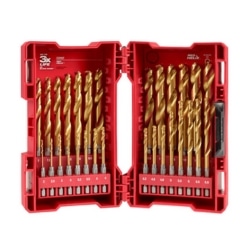
Our Rating: 4.9
Offering titanium construction, these robust bits can handle the high pressures and torque delivered by impact drills.
This Milwaukee drill bit kit’s boring tools include:
- Robust carry case.
- Shockwave Red Helix Titanium Drill Bits — 2, 2.5, 2×3, 3.2, 3.5, 2×4, 4.2, 4.5, 4.8, 5, 5.5, 6, 6.5, 6.8, 7, 7.5, 8, 8.5, 9, 9.5, 10, 10.5, 11, 11.5, 12, 12.5, and 13 mm.
Makita HSS-Cobalt Drill Bit Set D-57180 – 13 Pieces

Our Rating: 4.8
Rust-resistant and with a cobalt build (five percent) to enhance heat resistance, these drill bits are ideal for dense and stubborn metal drilling.
Includes:
- Window carry case.
- Makita cobalt drill bits — 1.5, 2, 2.5, 3, 3.2, 3.5, 4, 4.5, 4.8, 5, 5.5, 6, and 6.5 mm.
Sutton D180SM3 Drill Bit Set – 25 Pieces

Our Rating: 4.8
Designed to overcome the challenges of drilling stainless steel, these M2 HSS drill bits feature a fast spiral, short flutes, and a unique stepped core — providing efficient cutting.
Includes:
- Plastic index case.
- Inox Jobber Nano PVD-tipped bits — 1, 1.5, 2, 2.5, 3, 3.5, 4, 4.5, 5, 5.5, 6, 6.5, 7, 7.5, 8, 8.5, 9, 9.5, 10, 10.5, 11, 11.5, 12, 12.5, and 13 mm.
Bordo 2000-F3 Drill Bit Set Imperial Black Knight – 29 Pieces

Our Rating: 4.7
With split point bits to self-centre and improve accuracy, these steam-tempered HSS bits power through tough ferrous metals.
Includes:
- Shelved carry case.
- Imperial Black Knight bits — 1/16, 5/64, 3/32, 7/64, 1/8, 9/64, 5/32, 11/64, 3/16, 13/64, 7/32, 15/64, 1/4, 17/64, 9/32, 19/64, 5/16, 21/64, 11/32, 23/64, 3/8, 25/64, 13/32, 27/64, 7/16, 29/64, 15/32, 31/64, and 1/2 inches.
Milwaukee Shockwave 4932471112 – 8 Pieces

Our Rating: 4.7
Boasting durable carbide tips, this multipurpose combination drill bit set from Milwaukee can address wood, plastic, metal, roof tiles, PVC, and ceramics.
Includes:
- Split carry case.
- Shockwave carbide-tipped bits — 4, 2×5, 2×6, 8, 10, and 12 mm.
Drill Bit Operating Tips
Here are a few pointers that, when followed, will preserve the life of any of the above drill bit types:
- Hard materials require slow drilling speeds, and soft materials require faster drilling speeds. Rapidity should generally decrease as the hole becomes deeper. See the formula below for the recommended drilling speeds for HSS drill bits.
- You can centre punch holes first for more accurate drilling.
- Apply cutting fluid to the bit when drilling metals (with the exception of brass and iron) for better drilling results.
- If you intend to drill all the way through a piece of timber, use a wooden backing board behind the work to avoid material breaking out.
- Always let the drill bit cool naturally. Never force it to cool down in water (or any other liquid).
- Large drill bits will transfer substantial reaction forces onto the drill, so be prepared to hang on!
- All drill bits should be lifted frequently to clear material from their flutes, and also to increase airflow around the bit to help it cool.
- Always ensure bits are sharp to ensure less load on the power tool and better cutting results.
- Always apply pressure in a straight line with the drill bit. You should use enough to keep the drill biting but not so much that the tool’s motor stalls or the bit deflects.
- To prevent breaking through the material, reduce the pressure you’re applying and ease the bit through the last part of the hole.
RPM Formula
The following formula is known as the metric spindle-speed formula and can be used when using HSS drill bits.
It gives you a close approximation of the required RPM (revolutions per minute) you must operate your HSS drill bit at for the best cutting results — in a range of different materials.
It’s most useful when operating drill presses where accurate preselection of RPM values is available.
The formula is as follows:
RPM = (320 x Cutting Speed) ÷ Bit Diameter
‘Bit Diameter’ is measured in millimetres (mm) and refers to the size of the HSS drill bit you’re using. ‘Cutting Speed’ is measured in metres per minute (m/min) and can be sourced from the below table for the specific material you’re drilling.
Input the correct bit diameter and cutting speed into the formula and calculate the required RPM for your application.
|
Cutting Speeds (mm/min) |
||||
|
Stainless Steel |
Cast Iron |
Mild Steel |
Copper, Brass & Aluminium |
Plastics & Wood |
|
15 |
20 |
30 |
50 |
80 |
Please note that the calculated speeds should only be used as a guide. Depending on various factors at work, including the specific grade of the material and cutting fluid availability, changes may need to be made to the calculated RPM. It’s best to start with a slower speed, observe the cutting action, and increase it if needed.
When operating power tools, personal protective equipment (PPE) must always be worn. Here is some more information on PPE and power tool safety.
Conclusion
For tradies, serious DIYers, and home improvers — a carefully chosen drill bit set is crucial.
Containing everything you need inside one handy and cost-effective kit — a wide range of durable bits means you’re ready to tackle your wood, plastic, metal, and masonry projects.
When selecting your ideal combo set, initially consider the materials you’ll be addressing in your most common jobs — and ensure the bits match your brief.
Furthermore, always check that the shank of your bit kit is compatible with your hexagonal, round, or SDS chuck. Finally, look at the bit build material and design to verify it has the robustness to handle your workload and create the type of hole or countersink you require.Use our guide on buying and our ultimate top picks above to help you select one of the best drill bit kits!
Drill Bit Sets FAQs
What Are Drill Bit Set Kits?
Drill bit sets are collections of variously sized drill bits, sometimes including different types designed to drill into specific mediums. They offer convenience and affordability and ensure you always have the right bit for your trade or DIY jobs.
Are There Drill Bit Kits for Metal Specifically?
Yes! These metal-focused kits contain various-sized HSS (high-speed steel) or cobalt bits — designed for powering into different types of metals. Some high-end kits may also include speciality bits for boring stainless steel or thin sheet metal.
Should I Buy a Drill Bit Set Kit?
Purchasing a bit set — compared to buying individual bits — typically saves you significant money. Furthermore, it ensures you have a range of sizes and bit types for tackling different projects.
Can You Buy DeWalt Drill Bit Kits?
Indeed you can! Tool maestros DeWalt sells a number of premium drill bit kits for the discerning DIYer and serious tradie — such as the multipurpose DWA1181 21-piece kit.
What Materials Do Drill Bit Sets Typically Drill Into?
You can get your hands on sets that power into timber, metal, plastic, and drywall. Some drill bit kits may also have masonry bits for drilling into brickwork and concrete.








